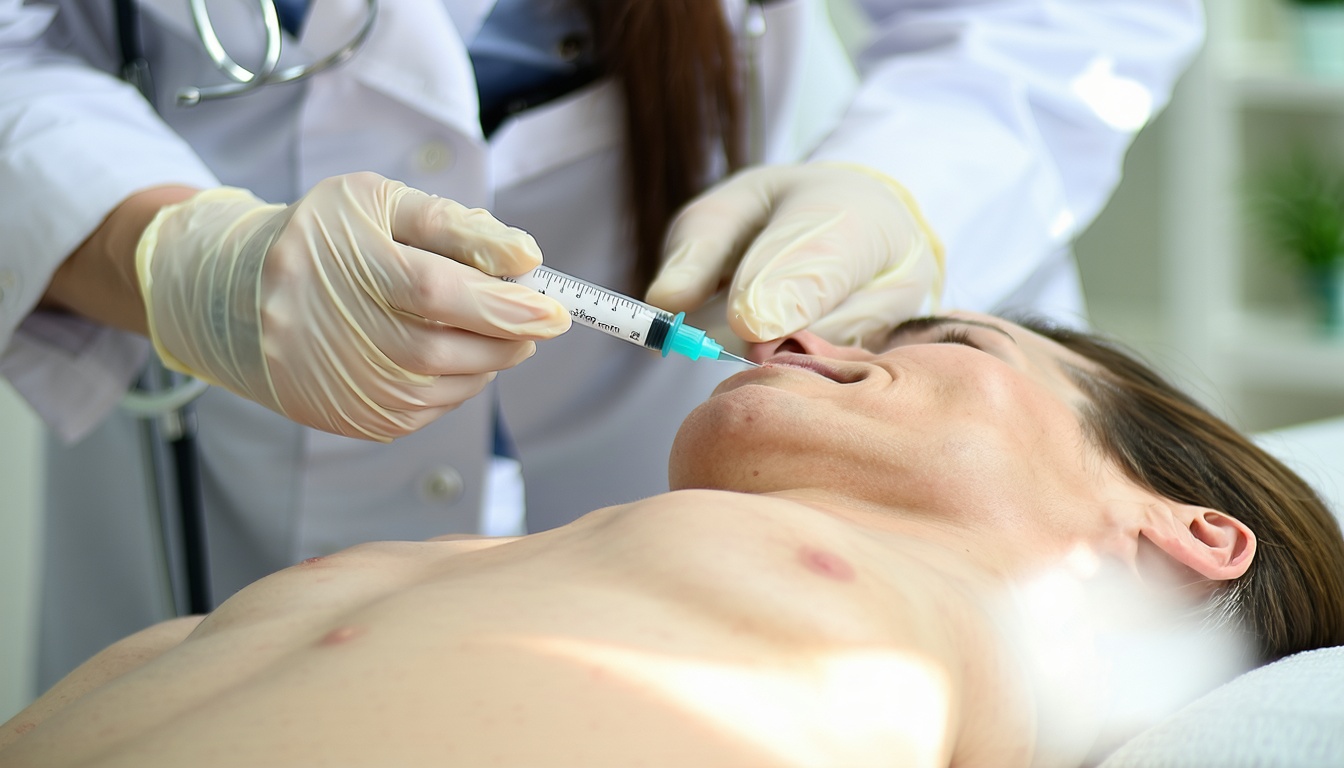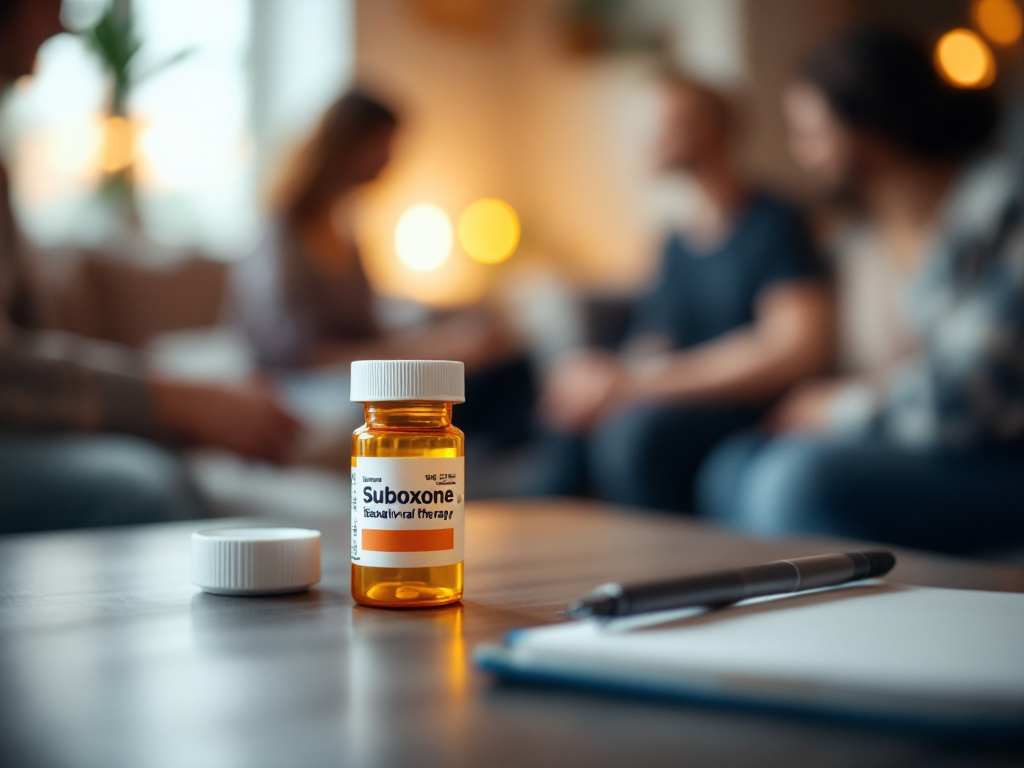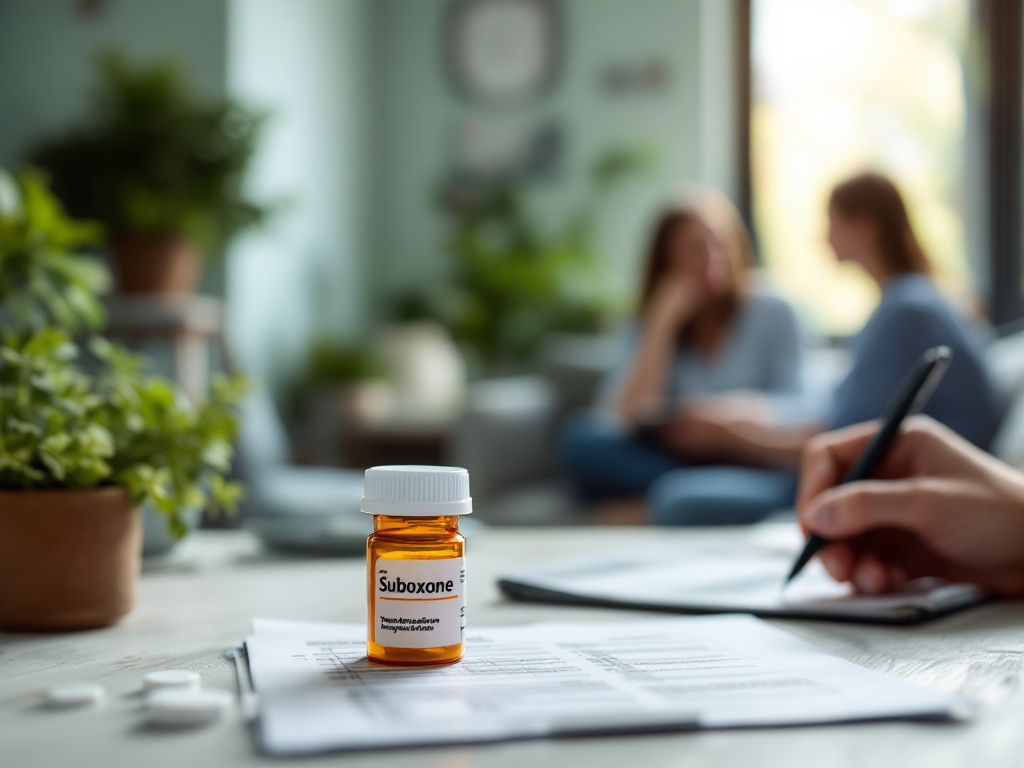Understanding the Sublocade shot
If you or a loved one is looking for a supportive path toward overcoming opioid addiction, you may have come across the Sublocade shot as a potential solution. This injectable form of buprenorphine offers a once-monthly treatment option that can reduce cravings and alleviate withdrawal symptoms. In a field where consistency in care and personalized approaches are critical, injecting medication on a monthly schedule can make a huge difference in maintaining momentum. Because Sublocade is designed specifically to treat moderate to severe opioid use disorder, it is often viewed as an important advancement in medication-assisted treatment (MAT).
When you start exploring the Sublocade shot, it is typical to feel both hopeful and uncertain. After all, you might be asking yourself: Is it safe? How does it compare to daily oral medications such as Suboxone film? Will it fulfill my specific recovery needs? In the following sections, we will address these questions and others to give you an in-depth understanding of Sublocade’s function, safety profile, potential benefits, and how to determine whether it is the right option for your journey. With the right resources, professional support, and evidence-based treatments, you can chart a clear path to recovery.
How Sublocade works in opioid recovery
Sublocade is a brand-name prescription medication that slowly releases buprenorphine into your body over a month. Buprenorphine is an opioid partial agonist, which means it attaches to the same receptors in the brain as other opioids but produces milder effects. By activating these receptors in a controlled manner, Sublocade can help reduce cravings and mitigate withdrawal discomfort without generating the same level of euphoria associated with high-risk opioids.
Monthly administration
Unlike daily oral medications, Sublocade is administered once a month. A healthcare provider injects the medication under the skin (often in the abdominal area, but other injection sites like the thigh, buttock, or back of the upper arm are also possible). Because it forms a gel-like depot at the injection site, the medication is released steadily. This steadiness can be a relief for people concerned about missing doses or losing motivation to take oral medication each day. Research indicates that a consistent level of buprenorphine in the bloodstream helps minimize highs and lows that may trigger relapse, making a once-a-month approach appealing (Porch Light Health).
Who qualifies for Sublocade
To start Sublocade, you must have already been stabilized using a transmucosal buprenorphine product such as Suboxone film for at least seven days. This induction period allows you to determine how well your body tolerates buprenorphine. Your healthcare provider may discuss your medical history, evaluate any co-occurring conditions, and ensure that you understand the benefits and risks of the Sublocade shot. In many cases, it is part of a comprehensive plan that also involves counseling or other psychosocial support. If you live with an opioid use disorder and have not found success with other methods, Sublocade may be an option worth exploring in partnership with your treatment team.
Evaluating the benefits of monthly injections
Choosing the right medication-assisted treatment often requires weighing different factors, including consistency, convenience, and adherence. The Sublocade shot offers unique advantages that people in recovery may find extremely beneficial.
- Simplicity: A once-a-month injection can simplify your treatment schedule. If you have a busy life, juggling work or family responsibilities, you may find it easier to attend a monthly appointment rather than remembering daily doses.
- Steady medication levels: Buprenorphine is slowly released, helping maintain stable levels of medication. Fluctuating blood levels can lead to breakthrough cravings or withdrawal symptoms. A steady release helps avoid these problems.
- Privacy and discretion: Daily oral medication can be a reminder of addiction in a way that some individuals prefer to leave behind. Monthly injections can allow you to focus on your everyday routine without the potential stigma or disruption of taking medicine each morning.
- Reduced distractions: If you have struggled with consistent dosing in the past, or found it tempting to misuse or skip oral medication, once-a-month treatments can promote better adherence. Fewer daily decisions about medication usage may relieve you from the cycle of guilt often associated with a missed dose.
While there is no one-size-fits-all solution, Sublocade’s monthly form of buprenorphine can be an empowering alternative when managing addiction through a structured yet flexible approach. Your healthcare provider can help evaluate whether these advantages suit your personal recovery goals.
Potential side effects and safety considerations
Even with its track record of helping people in recovery, the Sublocade shot is not without potential side effects. Common reactions may include discomfort at the injection site, such as redness, pain, or bruising. More general reactions can range from nausea and headache to mild insomnia. Here are some of the key aspects of Sublocade’s safety profile and side effects:
Common physical effects
- Injection site reactions: You may notice swelling or tenderness at the injection area after your monthly administration. According to clinical research, injection site reactions are common but typically mild (Medical News Today).
- GI symptoms: Nausea, vomiting, or constipation can occur. Sometimes adjusting diet or fluid intake can help you cope with these issues.
- Fatigue or sedation: Feeling drowsy is not unusual during the first few days after each shot. If you experience pronounced sedation or respiratory issues, let your medical team know.
Respiratory caution
Because buprenorphine is an opioid medication, there is a risk of respiratory depression if it is misused. Fortunately, Sublocade is injected under the skin in a clinical setting, reducing the likelihood of improper use. The medication’s steady release also contributes to improved safety when compared to some other treatments. Nevertheless, always be open with your healthcare provider about other medications you take so you can prevent dangerous interactions.
Controlled program access
Sublocade is distributed through a restricted program called the Sublocade REMS (Risk Evaluation and Mitigation Strategy) Program to ensure it is only administered by certified healthcare professionals. This requirement helps safeguard patients from the risks of self-injection, such as injecting into a vein, which can have serious consequences (Healthline).
Comparing Sublocade with other treatments
Understanding how Sublocade stacks up against other treatment options, such as Suboxone or methadone, can help you determine if it is a good fit. Each of these therapies works to minimize withdrawal symptoms and cravings, but the method of delivery, dosing frequency, and personal comfort level vary.
| Treatment | Administration | Frequency | Key Differences |
|---|---|---|---|
| Sublocade | Subcutaneous injection by provider | Once per month | Monthly injection, slow-release depot under the skin |
| Suboxone (buprenorphine/naloxone film) | Oral dissolvable film | Daily | Self-administered, requires daily compliance |
| Methadone | Oral medication (liquid/tablets) | Daily | Dispensed in specialized clinics, daily visits often required |
Choosing the right approach
- Daily accountability vs. monthly convenience: Some people prefer having daily accountability with a treatment center, such as with methadone. Others appreciate not having to think about medication daily, which Sublocade can provide.
- Risk of misuse: Sublocade may reduce misuse potential because it is administered by professionals only. Methadone or Suboxone can be misused if not carefully monitored, although they are safe when taken as prescribed.
- Lifestyle fit: If you have limited time or do not want the routine of visiting a treatment provider daily, monthly injections can be a better match.
If you prefer a combination of structure and flexibility, consider also exploring a suboxone treatment program for comparison. Ultimately, the right choice depends on your comfort, medical history, and professional guidance.
Integrating counseling and support
Many experts consider the Sublocade shot most effective when combined with a holistic treatment plan that involves counseling, support groups, or other forms of therapy. Opioid use disorder is a complex condition, often with underlying psychological, social, or emotional components. Addressing these aspects can make a huge difference in long-term success.
Therapy options to consider
- Individual therapy: Meeting one-on-one with an addiction counselor, such as through individual therapy addiction, can help you gain tailored coping strategies.
- Group therapy: Sharing challenges and triumphs with peers can boost your sense of connection. Look for programs that focus on camaraderie and accountability, like a group therapy addiction counseling setting.
- Family therapy: Many individuals benefit from bringing loved ones into the recovery process. Family-based programs can mend strained relationships and build communal support.
- Specialized services: If you are pregnant or planning to become pregnant, a pregnancy addiction treatment program can offer specialized care.
Therapists and counselors play an essential role by teaching you how to manage stress, develop healthy habits, and process underlying emotional issues related to substance use. Medication alone can reduce physical cravings, but integrating psychosocial support often fosters deeper, longer-lasting recovery.
Preparing for Sublocade treatment
If you are considering transitioning to the Sublocade shot, the process usually involves several steps to ensure a smooth experience. Knowing what to expect can give you a sense of control and reassurance.
Step-by-step overview
- Induction with oral buprenorphine: Before your first Sublocade injection, you will need to be on a stable dose of a transmucosal buprenorphine product, which could mean using Suboxone film or another oral formulation for at least a week.
- Health assessment: Your healthcare provider will assess your overall wellbeing, including any co-occurring health conditions, such as anxiety or depression. Full disclosure of other medications and substances is key to safety.
- Informed consent and enrollment: You will be enrolled in the Sublocade REMS program, acknowledging the risks and benefits of monthly injections. You should also have a clear understanding of potential side effects.
- Injections schedule: Monthly injections are commonly given in your abdominal area, but alternative sites may be used. The schedule is strict, so it is crucial to keep your appointment to ensure uninterrupted medication coverage.
- Monitoring progress: Your doctor may periodically request bloodwork, check for side effects, and assess your mental health. If needed, you may adjust your dose or switch from 100 mg to 300 mg for optimal management.
Building a strong support system
Recognize that monthly injections, while convenient, still require you to engage with your care team. Consider supplementing your medication routine with interventions like substance abuse counseling or telehealth addiction treatment to stay connected to consistent support. If you face challenges with transportation or scheduling, you may explore available resources like flexible evening addiction appointments or transportation services addiction treatment.
Why choose Freedom Treatment for help
Navigating the complexities of opioid addiction requires a multidisciplinary approach, and that is exactly what we provide at Freedom Treatment. We know that choosing a treatment facility is a deeply personal decision, so we focus on creating a caring, empathetic environment where your recovery is our top priority. By combining the possibility of using the Sublocade shot with a variety of traditional and holistic therapies, we offer:
- Inclusive programs: We tailor our services to address your physical, emotional, and psychological needs. From opioid addiction treatment to co occurring disorders counseling, we aim to treat the whole person.
- Evidence-based methods: Our team incorporates proven protocols, including medication-assisted therapies, structured counseling, and ongoing aftercare planning. We take great care to keep up with the latest best practices so that you benefit from trusted and innovative approaches.
- Compassionate team: Empathy lies at the heart of every interaction. We recognize the unique challenges you face, whether they stem from emotional traumas, societal pressures, or family responsibilities. Our approach upholds respect and genuine concern for your wellbeing.
- Convenience and flexibility: Life rarely fits neatly into a schedule. We understand that, so we incorporate services such as medically supervised detox placement, evening appointments, and telemedicine counseling service where possible.
- Ongoing support: Lasting change is not just about detox and medication. Our
aftercare substance abuse program and outpatient relapse prevention planning help you remain stable and supported in the formative months and years of long-term recovery.
By offering a comprehensive selection of specialized programs, we believe we can cater to a diverse range of needs. Whether the Sublocade shot is part of your care plan or you choose a different medication approach, our focus is on giving you the foundation for a healthier, more fulfilled life.
Five frequently asked questions
1. Is the Sublocade shot addictive?
Buprenorphine, the active ingredient in Sublocade, is an opioid partial agonist and does carry a risk of dependence. However, the monthly injection format typically reduces misuse potential. It is administered by a medical professional in a controlled environment, making it far less likely for you to develop an addiction to Sublocade compared to short-acting opioids. Additionally, you will be monitored to ensure safe usage.
2. How long do I have to be on Sublocade?
The duration of Sublocade treatment varies widely. Some individuals successfully taper off after six months, while others continue for a year or more (Porch Light Health). Your provider may recommend continuing monthly shots until you feel a stable reduction in drug cravings and are comfortably navigating daily life without relapse. Ultimately, the length of treatment is a discussion you will have with your healthcare team, factoring in your progress and comfort level.
3. Does the injection process hurt?
You might experience mild discomfort when the medication is injected under your skin. Many patients have reported feeling a small lump where the gel-like depot forms, which can initially feel a bit sore but often diminishes over time (Drugs.com). Significant pain is uncommon, but if you anticipate anxiety or discomfort, discuss it with your healthcare provider beforehand. They can take measures to make the process more manageable.
4. Can I take other medications or therapies while on Sublocade?
Yes, but it is crucial to communicate openly about all medications you are taking. Your medical team will help you avoid potentially dangerous drug interactions. If you need help for other conditions, you might consider specialized outpatient therapy or scheduling a consultation with a doctor that offers sublocade to maintain oversight of any co-occurring disorders. Combining Sublocade with therapy, such as customized substance abuse counseling, can amplify the effectiveness of your recovery plan.
5. What if I miss a monthly injection?
It is important to receive each Sublocade shot on schedule to sustain consistent levels of buprenorphine. If you realize you cannot make your appointment, call your provider as soon as possible to reschedule. Missing an injection may allow cravings or withdrawal symptoms to resurface and reduce the medication’s effectiveness. If challenges like transportation or scheduling arise, ask your provider or treatment team about transportation services addiction treatment or other supportive options that may help you keep appointments.
Setting your path forward
Embracing recovery from opioid addiction is a significant choice—one that can be both daunting and empowering. While it is essential to carefully weigh your options, the Sublocade shot provides a distinct advantage for those seeking an alternative to daily oral medication. By offering steady buprenorphine levels, monthly injections, and a professional administration setting, Sublocade is a strong contender in the world of medication-assisted treatments.
Still, remember that no single approach solves all the challenges of addiction. Lasting healing often hinges on surrounding yourself with a supportive community, attending counseling or therapy sessions, and finding hope and insight through honest conversations. It also requires a commitment to ongoing care. Having a team that understands both the practical matters—such as scheduling medication injections—and the emotional journey of overcoming addiction is crucial.
If Sublocade or another form of medication-assisted treatment could benefit you, we are here to guide you every step of the way. At Freedom Treatment, we understand that every person’s recovery story is unique. By taking advantage of comprehensive programs, including opioid addiction treatment, you can face the unique challenges posed by substance use disorders with confidence. From individualized therapy to flexible scheduling, our mission is to ensure you feel recognized and supported as you embark on your journey to wellness.
We would be honored to help you explore whether the Sublocade shot or another treatment avenue aligns best with your circumstances. Your fight against addiction doesn’t need to be fought alone. Reach out and let us walk it with you, offering empathy, expertise, and unwavering support. With the right plan in place, real recovery—and a healthier, fulfilling future—are within reach.











